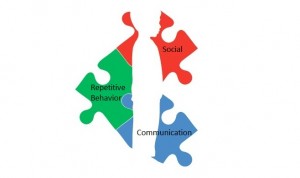The Social Brain
Two recent studies provide support for the therapeutic potential of oxytocin for Autism Spectrum Disorders (ASD). One research team showed that ASD individuals who took an oxytocin nose spray improved their ability to discriminate non-verbal social cues and increased their attention to other people’s eyes. Another research group demonstrated that fathers who took the oxytocin nose spray bonded more with their infant during a play session, leading to enhanced oxytocin expression and social interaction in the infant, as well.

Humans, like other mammals, are fundamentally social creatures. A baby's brain can't develop properly without the right social stimulation from the baby's loved ones. A classic early experiment in the 1950s showed that baby monkeys deprived of social interaction try to cuddle with inanimate objects. If the infant monkey is isolated from any social contact, as a juvenile, the monkey shows deficits in play and learning, and is more fearful.This section describes how we understand social signals, the parts in the brain that are involved in processing social information, and how these parts differ in people with ASD.
Key Points
- We are fundamentally social creatures.
- Faces are critical for communicating. Our eyes and mouth reveal our emotions.
- The brain's social pathway attaches meaning to social signals, motivates us to respond to social signals, and guides our social behavior.
- Key hormones (oxytocin and vasopressin) and neurotransmitters (dopamine) help us bond with other humans and motivate us to do so.
- Deficits in all of these brain regions can be seen in ASD patients.
Misconception
Our brains develop without the influence of people that surround us.
Fact
We are fundamentally social creatures. A baby's brain can't develop properly unless he/she is around other people and provided social stimulation from the ones they love.
Read about other misconceptions.

